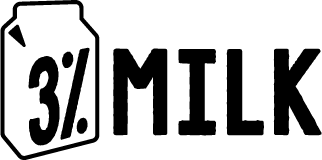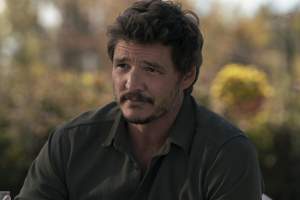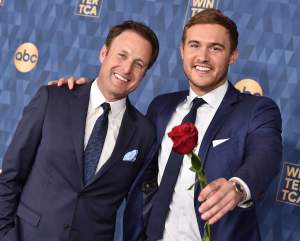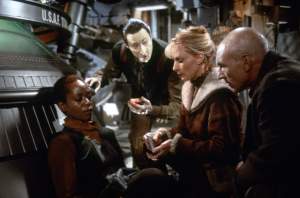Friday the 13th: The Final Chapter

movienutt/moviestillsdb
This isn’t the first installment in the series. Nor is it the first entry with Jason as the villain (that’s the sequel). It isn’t the first time that Jason dons his signature hockey mask (that’s part three). Heck, it isn’t even the final chapter, despite its title.
What it is, though, is the one where it all finally came perfectly together. This right here is the platonic ideal of a Friday the 13th movie. It has an excellent final girl, the introduction of Tommy Jarvis, incredible effects work by Tom Savini, and the most interesting group of “kill fodder” in the series (hello Crispin Glover). If you’re only going to watch one Friday, this is it.
Is it stupid? Absolutely. Is it a great ride? No question.
Day of the Dead

esmauel/moviestillsdb
This is something of a hot take, but Day of the Dead is director George Romero’s best work. As a follow-up to Dawn of the Dead, the movie was initially dismissed for being less ambitious, filled with hammy performances, too few zombies, and too much talking. Nonsense. Day of the Dead features some of Tom Savini’s best effects work and uses its run-time to tell a tragic human story set at the bitter end of civilization.
Perhaps it’s the film’s bleak, hopeless tone that turned off critics in 1985 and blinded them to the positives in this incredible film. There is admittedly something about this film that makes you feel like you have the flu.
Near Dark

zs93/moviestillsdb
Haven’t heard of Near Dark? Don’t worry, you’re not the only one… but you should change that.
This was Katherine Bigelow’s first outing as a solo director and kudos to her for taking on such a challenging project. The movie combines the modern drifter western genre with a pulpy vampire picture to create something wholly unique. The film is beautifully shot, and the Tangerine Dream score, while not their best (that would be Sorcerer and Thief) is still memorable and effective. The late, great Bill Paxton completely steals the show, though Lance Henriksen, Jenny Wright, and the rest of the hillbilly vampire brood deliver the goods.
The Fly

jbone/moviestilldb
Loosely inspired by the 1958 film of the same name, The Fly stars Jeff Goldblum as a brilliant and ambitious scientist who, while developing a teleportation device, is accidentally fused with a common housefly and slowly turns into a vile hybrid monster. It’s directed by David Cronenberg, the master of body horror who uses heavy gore and grotesque imagery not just to shock audiences but also to enhance the ideas and themes that his films explore.
And boy are the effects in this film disgusting. Watching Seth Brundle transform and deteriorate over time is genuinely upsetting, and Goldblum is such a pitiable creature by the film’s conclusion you’ll be begging for the end just like him. If you can stomach it, it’s one of the best in the genre.
Poltergeist

yodasimpson/moviestillsdb
You have to feel a bit for director Tobe Hooper. Steven Spielberg, who officially served as a producer and co-writer on the project, was supposedly highly involved in the day-to-day production, so much so that some have claimed that he (forgive the pun) ghost-directed the picture.
Whoever was in charge, the result was one of the most iconic horror films of the 1980s. What works so well is that at its core the movie is a relatable family drama, and everything from the jump scares to the brilliant visual effects function in service of that instead of the other way around.
Videodrome

jasonhart/moviestillsdb
Whatever your thoughts on Videodrome, you have to acknowledge that it’s one of a kind. Another David Cronenberg body horror classic, this time diving deep into the world of pirate broadcasting, snuff films, mind control, conspiracy theory culture, and the way that technology can have deleterious effects on our senses. Which is to say, Videodrome has never been more relevant, even if we’ve graduated from VHS and CRT televisions to smartphones and social media.
Cronenberg was working with his biggest budget to date, and you can see every dollar on the celluloid. It’s a challenging watch, but one that will stick with you long after the transmission has concluded.
Evil Dead II

alucard69/momveistillsdb
Evil Dead II is filmmaking madness. Sam Raimi and his crew of maniacs built off of what they started with the original Evil Dead and used the increased budget to top themselves in every way and make one of the greatest horror films of all time.
The movie is as much a remake of the original as it is a sequel, but don’t let minor quibbles like some of the plot not making sense get in the way of a good time. Bruce Campbell delivers an iconic performance, showing off how skilled of a physical comedian he is. It remains a crime that he never caught on as a leading man.
A Nightmare on Elm Street

thanatos/moviestillsdb
With A Nightmare On Elm Street, director Wes Craven was able to wonderfully replicate the incongruous, surreal, and occasionally terrifying nature of dreams, all on an incredibly modest budget. The way the geography of a familiar place breaks down in a tense moment, or feeling like your feet are melting into the floor when trying to run, or how body features can exaggerate like extended arms reaching out to grab you — all in ways that go completely unquestioned by the dreamer.
It’s a quality that isn’t present in other slashers of the era and drops away as the Elm Street series runs out of steam in later installments. It makes the first a truly unique, frightening experience that stands the test of time.
The Shining

movienutt/moviestillsdb
No surprise that when Stanley Kubrick got around to making a horror film he’d go and deliver one of the best the genre has to offer. The film is genuinely terrifying, though this comes mostly from the ominous, oppressive tone and Jack Nicholson’s full descent into madness and not through cheap jump scares or excessive gore.
There are famously scores of theories on what the film is really about as if it’s some kind of puzzle box to be solved. While those can be fun in their way — The Shining is Kubrick confessing to the fact that he helped fake the moon landing — some of that takes away from appreciating the film for what it is: a chilling, atmospheric psychological horror film that any fan of cinema owes it to his or herself to see
The Thing

Zayne/moviestillsdb
If everything else about the movie was complete and utter garbage, but the creature effects remained the same, John Carpenter’s The Thing would still be one of the great achievements in horror cinema.
Thankfully, that is not the case and The Thing is, in fact, superlative in every sense. Every scene is memorable, each performance is thoughtful and well-considered, Ennio Morricone’s score is atmospheric and foreboding, and the pacing is deliberate without feeling glacial. There’s endless praise to heap on this film, and it is a true shame that, like many of Carpenter’s best, it wasn’t able to find a wide audience on its initial release. It’s a special film.







